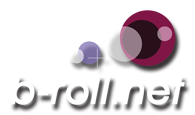“It is a great  way for people in the news to develop relationships with their viewers,” says WTVA-TV anchor/reporter, C.J. LeMaster, who has one of the biggest social media followings at his station in Tupelo, Miss.
way for people in the news to develop relationships with their viewers,” says WTVA-TV anchor/reporter, C.J. LeMaster, who has one of the biggest social media followings at his station in Tupelo, Miss.
LeMaster says he doesn’t try to tell his 24oo Twitter followers what they should think, rather he just wants to inform them. In his view, a news figure should never tweet political or controversial opinions.
However, LeMaster is not afraid to let his viewers know something about his life off the air. Jeff Cutler, who conducts social media workshops for the Society of Professional Journalists, says this combination is not unusual for someone in news.
“He is using it as a personal Twitter stream with some news tossed in and pushing folks to his Facebook page for work stuff,” said Cutler.
One of the reasons LeMaster may feel comfortable combining the personal and the professional into one stream is that he says he takes his time to make sure that his tweets are appropriate for everyone. He says if there’s ever a doubt in your mind about whether you should post or tweet, you probably shouldn’t.
At WJTV-TV in Jackson, anchor Erin Pickens is not quite as comfortable sharing her off-camera life with the public. She maintains four social media accounts, two on Facebook and two on Twitter. One set of these accounts is for personal use, and the others are set up for work. Cutler is not surprised.
“Personal vs. business is a funny thing. I find that most women keep their stuff professional across the board and have a private Facebook page for family and close friends. They also often — about half the time — have a personal Twitter that’s locked or no personal Twitter at all,” Cutler said. “Guys are much less protective of their info. The ones who know what they’re doing set up a Facebook Page and then just have one Twitter address for both personal and private.”
Pickens has about 600 friends on her personal Facebook account and 700 on her personal Twitter. Those numbers are quite different from her professional accounts where her Facebook tops out at almost 2,500 friends, but her professional Twitter stream has just a little more than 100 followers. Pickens says that she does not actively try to build her social media audience but knows she “should do a better job.”
“I believe social media has enhanced our business, especially now that more people have embraced it,” says Pickens.
Cutler suggests that LeMaster, and especially Pickens, should take some time to evaluate what they want social media to do for them. He also has a couple more recommendations for journalists trying to build social media audience.
- If you are using multiple accounts, remember not to double post everything you share. It’s silly to see a Facebook status update like “Follow me on Twitter” showing up in a Twitter feed.
- Flesh out your social media bios. You want people to know what type of content they will get if they follow you. Add a second link to your bio, if you can; Cutler recommends LinkedIn.
LeMaster admits there is a downside to doing social media well. At times he feels “too connected” and obligated to act as a news source for his followers, but he says, social media’s benefit of building trust between the journalist and the audience is too important to give up.
University of Mississippi journalism students Anne-Conner Dickerson and Poinesha Barnes contributed to this post.
